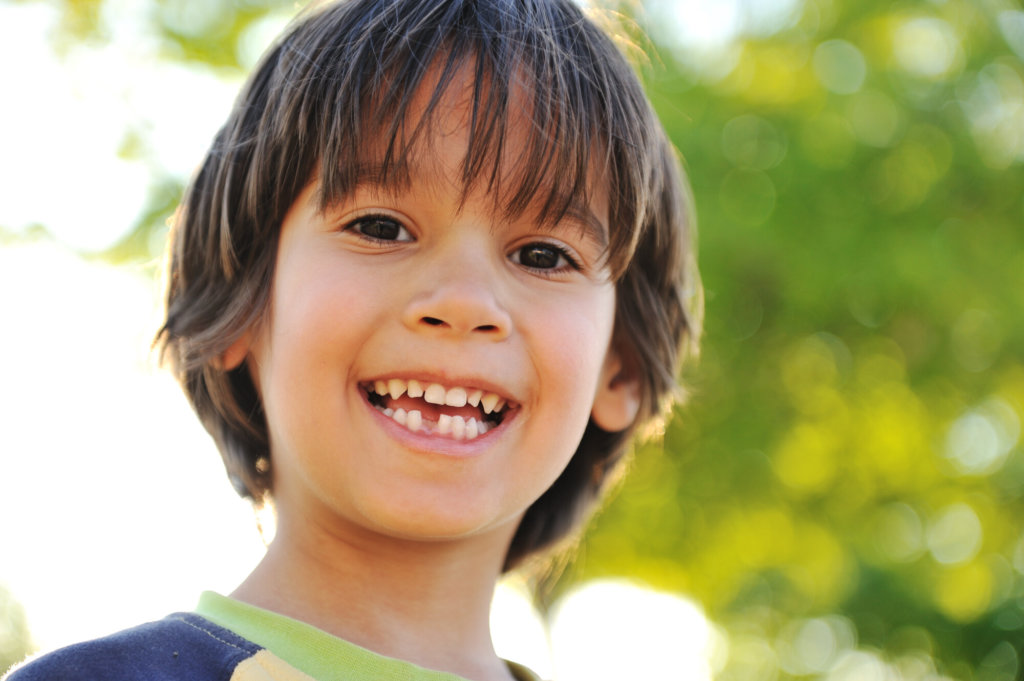
Baby teeth can be thought of as placeholders for the permanent adult teeth that will appear later in childhood. Typically, a child will have 20 baby teeth and will lose all of them, ultimately making way for 32 permanent teeth. Baby teeth help to create space in the jaw for the permanent teeth that will emerge in the future.
For children, losing baby teeth can at first be a strange occurrence. This typically turns to excitement as the Tooth Fairy begins to pay them visits (and cash!). For parents, it’s helpful to understand what the process will look like.
In this blog post, we will ask “When do kids lose teeth?” We will also highlight which baby teeth fall out first and share some useful tips on how to deal with teeth falling out and the importance of scheduling routine dental visits for your children from a young age. Let’s get started.
A Look at the Baby Teeth Eruption Process
Our teeth vary in shape, size, and location. Each has a different role within the mouth and, combined, our teeth enable us to speak, chew, and smile. As noted above, children typically have 20 baby teeth which will start to erupt at approximately 6 months of age. These baby teeth will be shed at different times through childhood, making way for adult teeth.
Baby teeth will begin to fall out from around the age of 6 to 7 years. Usually, all of a child’s baby teeth will have fallen out by around the age of 12 years, though every child’s case is unique. Let’s take a closer look at the specific baby teeth that fall out during childhood.
Central Incisors
The central incisors are the first teeth to fall out. With the lower set of teeth, the central incisors are the first the erupt, coming in at around the age of 6 to 10 months. These teeth usually fall out when a child is between 6 and 7. The central incisors on the top set of teeth will erupt between 8 and 12 months and will likewise fall out between the ages of 6 and 7.
As noted, some children are excited by the process of losing teeth. For others, this process can be a little unsettling, at least at the beginning. Losing a tooth can result in some pain or discomfort for the child, though it is something they quickly become accustomed to.
Lateral Incisors
The next teeth to fall out are the lateral incisors. With the top row of teeth, the lateral incisors tend to come in between the ages of 9 and 13 months, while the lateral incisors on the bottom row erupt between 10 and 16 months. For both the top and bottom sets of teeth, the lateral incisors typically fall out between the ages of 7 and 8 years.
By now, the process of losing teeth will be more normal for children. If they are profiting thanks to the Tooth Fairy, it’s likely that they will be more than willing to say goodbye to their baby teeth!
Primary Molars
Also known as the first molars, these are the next teeth to fall out after the lateral incisors. When the molars are erupting, children often experience pain and discomfort. The good news is that when the first molars fall out, usually between the ages of 9 and 11 years, the process is generally not painful for children.
Canines and Primary Second Molars
By now, children will be completely used to the process of losing teeth. The next teeth to fall out are the canines.
These teeth come in at around 16 to 22 months for the upper teeth and 17 to 23 months for the lower teeth. The upper set is shed between the ages of 10 and 12 years, while the lower set falls out between 9 and 12 years.
The primary second molars are the last baby teeth that a child loses. These teeth fall out between the ages of 10 and 12. Generally, a child will have their full set of permanent adult teeth by the age of 13.
Wisdom Teeth
Not everyone will get wisdom teeth, but those who do typically see them emerge between the ages of 17 and 21 years. Some people will get the full four wisdom teeth while others get only a few. In some cases, these teeth will need to be removed by a dentist.
Tips for When Teeth Start to Fall Out
While the process of teeth falling out isn’t usually overly painful, here are some useful tips to help make the process easier:
- Allow children to waggle any loose teeth (this will help them to fall out)
- Chewing hard foods such as apples can help a loose tooth to fall out
- A warm face cloth can be applied to the face to help with any pain
- Teach your children about the process before it begins and let the know that it’s completely natural
Finally, don’t worry if your children’s teeth are slow to fall out. Remember, every child is different.
The Bottom Line: When Do Kids Lose Teeth?
Children begin to lose their baby teeth from around the ages of 6 to 7 years. The last baby teeth typically fall out by the age of 12. Throughout the process, it is essential that children have regular dental checkups.
The sooner that children begin having regular checkups, the healthier their oral hygiene will stay throughout their lives. If you are looking for the best pediatric dentist in Arlington and Hurst, TX, your premier choice is Park Place Pediatric Dentistry & Orthodontics.
Contact our team today to schedule an appointment and to learn more about when do kids lose teeth and the process of losing baby teeth.
